Commercial construction is special in many ways, one of the most important differences compared to residential buildings being the sloping angle of the roof: while most residential roofs slope in a steep angle, commercial roofs are usually sloping in an angle that is almost invisible to the naked eye (that is why they are usually called flat roofs). Commercial roofs being almost completely flat, the range of materials used for building them is different from the range used on pitched residential roofs, one of the most popular and most modern option being synthetic rubber. Here are some of the benefits that make rubber roofing such a popular option for commercial buildings.

Durability and Resistance to the Elements
Rubber roofing materials have been developed to last and to provide durable protection for the buildings they are installed on. Correctly installed rubber roofs can be expected to last for around 40 years even among the harshest weather circumstances. Some of the most experienced commercial roofers Atlanta has confirm that rubber is an extremely strong material that maintains its flexibility even in extremely low temperatures, that does not stretch even when the temperature rises to extreme highs and that does not lose its physical features even in the strongest sunshine.
Easy Installation
Rubber roofing materials usually come in large rolls, with the membrane being cut to sizes that allow for creating roofs with the smallest number of seams. The installation consists of rolling out the sheets and fastening the large stripes of material with a suitable fixing method, either hot or cold fastening. The process usually takes very short even in the case of large roofs, much shorter than the installation of other types of roofing materials.
Light Weight and Flexibility
Foot traffic on roofs is a major problem for many commercial buildings. Rubber roofs eliminate the need to restrict traffic on the roof almost completely – the material being so light, it hardly adds any weight to the top of the building and its flexibility reduces the risk of puncturing or otherwise damaging the roof while walking on it.
Energy Efficiency
Rubber roofing systems are available in white and in other light colors, being the perfect option for buildings in hot climates, where superior roof reflectivity is needed for keeping cooling-related energy needs at bay. Rubber roofs can also be installed with insulation, the additional layer ensuring that the amount of heat transferred to the building interior is kept to the minimum as well.
Easy Maintenance
Correctly installed rubber roofs need almost no maintenance at all. Like any roof, rubber roofs also need cleaning in spring and in summer to prepare the roof for the two harshest seasons, summer and winter, but rubber roofs very rarely develop problems, such as leaks.
Environment-Friendly Options
Rubber roofing materials are usually manufactured from recycled materials and they are also recyclable at the end of their lifespan, being a great option for environment-conscious owners. Unlike tar paper and other popular roofing materials, the synthetic rubber used for roofing purposes is not petroleum-based, making the related manufacturing process even less of a burden on out natural environment.
